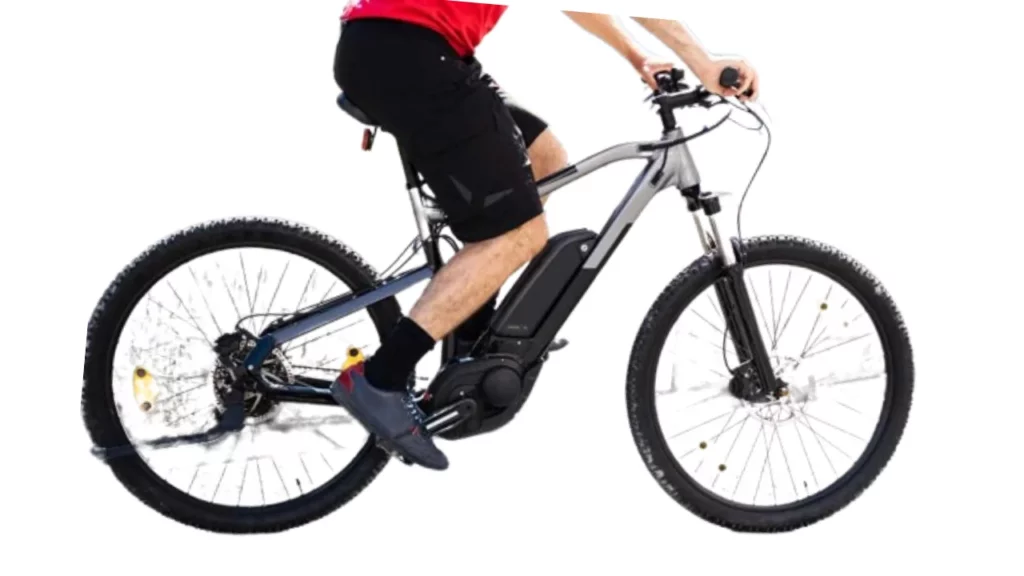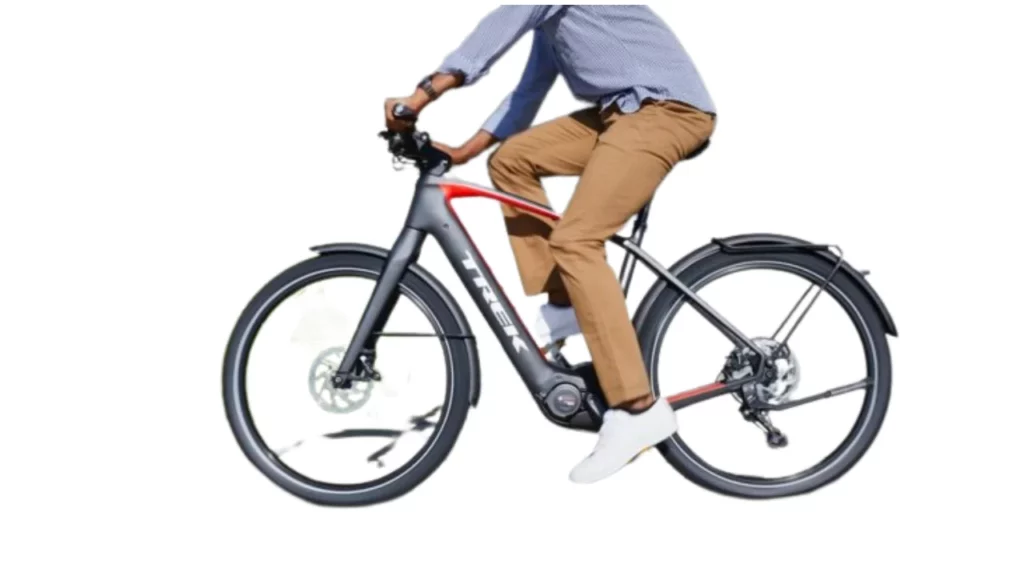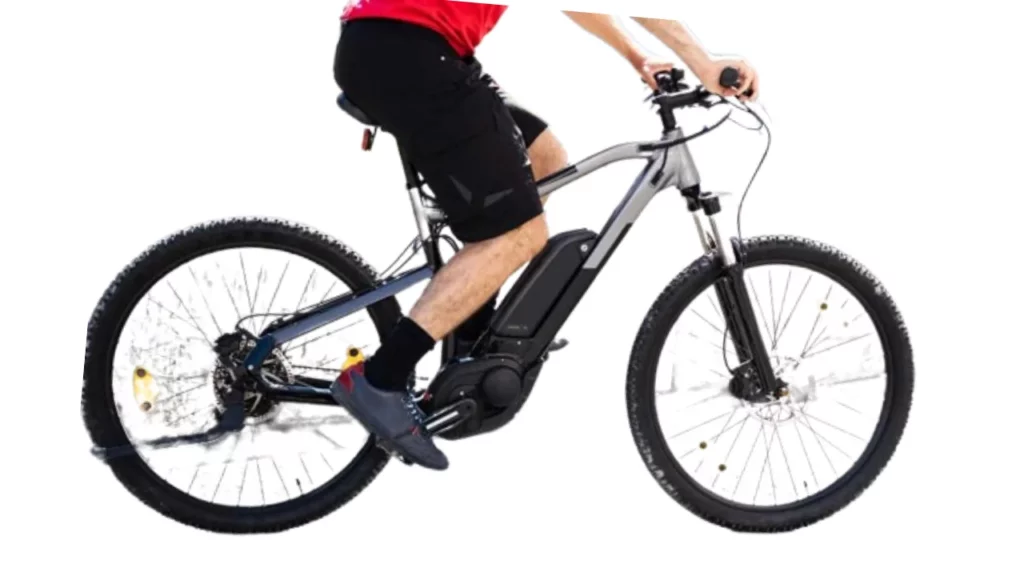Electric bikes are becoming increasingly popular in every region of the world. It should come as no surprise that a large number of people are purchasing electric bikes because of the numerous advantages they offer. This includes improved physical and mental health as well as a good influence on both the community and the environment.
A market report shows that over 1.3 billion electric bikes were sold in the year 2022 in the USA, and it is expected to reach 1.6 billion in 2023. The majority of individuals who are learning about electric bikes for the first time have inquiries regarding the electrical system.
For instance, lightweight electric bicycles have a significant amount of power and speed. This has led many people to ask a question: do electric bikes charge when you pedal them? Read on to find the answer.
- Also Read: Reset E-Bike Controller
- Also Read: Best E-Bikes for Teens
- Also Read: Best E-Bikes for Kids
- Also Read: Why E-Bikes Are Expensive
Do Electric Bikes Charge While Pedalling?

The majority of electric bikes cannot charge while you pedal. This is due to the physics, economics and culture of cycling. Many people find it inefficient, costly and undesirable to recharge on the go. However, it is possible to do so.
The basic principle is that you can generate some charge from the energy you produce as you ride. But most of us prefer to use all our energy to move forward, and not to store it for later.
It is also proven that pedaling to regenerate energy wastes a lot of energy in the conversion process. So, the main source of recharge is from braking.
You can turn the friction and heat–that you create when you brake–into energy and save it for future use.
But this requires a more sophisticated motor. And the scientific aspect is that the motor has to be always on. And if it is always on, it adds resistance to your pedaling.
The two main kinds of electric motors that you can find on your bike–mid-drive and geared-hub–switch off when they are not needed. This means you can glide or use your own power to push the bike forward without any resistance.
If you are planning to buy a ready-made e-bike, it will likely have a mid-drive or geared-hub motor. Some models offer charging by backpedaling, using the KERS system that Formula One cars use.
Do Electric Bikes Charge Themselves?
Self-charging e-bikes are not common in practice. The preferred method by most manufacturers is the mid-drive or hub-gear system. It is economical, minimizes the weight increase and provides pedaling support instead of full motor power.
The technology for self-charging is still developing.
Many experts think that regenerative braking in cycling is not worth it. The regenerative energy produced may only give you up to 10% extra energy and the motor needed for this is too heavy and complicated.
In the recreational market, it is nice to see that e-bike use is no longer considered as cheating as society encourages us to choose a different way to travel the first or last few kilometers to and from our homes.
Most recreational users like the help that assisted pedaling gives them when they encounter a strong wind or a steep hill. But many still choose normal pedaling for most of their ride. Charging while riding is possible, but it would discourage many of these casual riders, as charging while riding adds resistance and makes you slower.
However, it is obvious that there is a demand for using bikes as a means of transportation for business purposes. This will create new opportunities for electrically-assisted practical bikes.
Cargo bikes are becoming more popular and some users may want 100% electric charge with no human effort and a longer distance with fewer stops for charging.
How Do Electric Bikes Charge?
Charging your electric bike battery is as easy and simple as charging your phone or computer. First, consult your user manual. Then, connect the battery charger to a power outlet and the battery.
Switch it on. Most batteries can last for up to 1000 charging cycles.
You can usually take out the battery from the bike, unless it is integrated into the frame. It is better to charge it indoors to extend its lifespan. Most battery packs can be easily detached from their holders for this purpose.
You should avoid overcharging your battery and set a timer on your phone for the optimal charging time. Some people prefer to have an extra battery ready to use. Most batteries work best when they are between 30%-80% charged.
How Do Electric Bikes Work?

Electric bikes, or e-bikes for short, are a type of bicycle that can run on an electric motor. The motor gets its energy from a rechargeable battery. You can use e-bikes as regular bikes by pedaling with your own power, or you can switch on the motor to get some extra assistance.
The motor can be located either under the cranks in the middle of the bike, or inside the hub in the center of the wheel.
The mid-drive motor works by sending a current to help the pedals turn and move the bike. It is a smooth process that starts when you begin pedaling. It can sense how much effort you are putting into the pedals and adjust the power level accordingly.
The hub-motor is attached to a wheel of the bike, usually the back one. It has two types: the direct-drive or the gear hub motor.
The battery current makes a rotor inside the hub rotate and push the whole wheel forward. The power is instant and does not depend on anything. Some hub-motor bikes have throttles that you can use.
Before you buy your first e-bike, you need to know the local rules and regulations about them. There are some restrictions on how powerful the motor can be, how it can distribute the power, and how fast it can go before it has to stop.
Make sure you check your own laws before you make a purchase.
Common Electric Bike Charging Methods
Modern e-bikes have a pedal-assist feature that stops sending power to the motor when the e-bike reaches speeds of 20 to 28 mph, depending on the type of bike. This saves battery power, but does not charge the battery. However, some models can charge the battery when you pedal or brake.
These are some methods to charge your e-bike. Most e-bikes do not have regenerative charging, but the technology is possible:
Regenerative (Using Pedaling and Braking)
Regenerative charging lets you pedal or brake the bike to put power back into the battery. It is simple–just ride your bike and then pedal or brake to make electricity to charge your battery.
This is good for riders who cannot find a charging station or like to take shorter rides. It also works well for riders who do not want to leave their bikes alone to charge for safety reasons.
Remove the Battery to Charge
If you worry about your bike’s security at charging stations, you can take out the battery.
Turn off the battery, unlock the battery lock to remove it from the bike. Then, plug the power cord into the charger adapter and plug it into an outlet. Plug the charger into the battery’s charging port.
Wait three to six hours for your battery to charge before putting it back on your bike. It is that easy!
Charging Stations
You can plug your charger into a public charging station. Put your bike in a steady position and find the charging port. Bike rails can keep your bike steady, and are also good for locking your bike to protect it.
Most charging stations will have a bike rack close by, especially if they are outside.
Like the previous method, plug the charger into the battery; the difference is that you can take out the battery from the bike with this method. When it is plugged in, look for a red or green light. This light will tell you when your battery is connected to the charger and the charging has begun.
It is better to charge your bike fully and know that unplugging your battery before it is fully charged can make your battery life shorter over time.
What is Regenerative Braking?

A feature called regenerative braking lets some electric bikes recharge their batteries while you ride them.
You can mostly find this feature on throttle models, since it is hard to brake and pedal at the same time.
When you brake on a bike with regenerative braking, the motor turns into a generator and makes electricity. The bike stores this electricity in the battery, and then uses it to run the motor.
Advantages and Disadvantages
Regenerative braking has many benefits and drawbacks for electric bikes.
But it might be the best choice for you, depending on what you want from an e-bike.
Benefits
The bike uses the brake pads and braking equipment less often, so they need less maintenance. Your electric bike can go farther, letting you travel more distances. It saves energy and fuel.
Drawbacks
The bike becomes heavier and bulkier, making it harder to handle.
Regenerative braking does not work well at low speeds, because you do not need much energy to brake slowly. So the battery pack gets less energy.
The brake pedals feel different. So you may have to press harder on the brakes to stop quickly and safely.
Regenerative braking is rare, as only a few electric bike models have it. But it is a handy feature if you want to extend the range of your e-bike.
Retaining the Feel of a Bicycle
The reason why an e-bike cannot be recharged while you pedal is simple: it does not make sense economically.
Electric bikes are designed to convert your pedaling effort into forward movement just like a regular bicycle, and the motor provides extra support depending on your effort and preference.
First of all, it would be very wasteful to try to transform the power produced by your legs into battery power to be used later for forward movement.
And secondly, to capture your power output for battery recharging would require taking it away from moving the bike. This would change the whole experience of the ride, as your power output would be separated from forward motion.
The part that is harder to understand, is the problem of gradient-based regeneration. Why can’t your e-bike efficiently use energy when it is going downhill?
E-bikes are usually set up as mid-drive or rear-hub assisted, depending on where the motor is located. With a hub-drive motor, you can theoretically collect the kinetic energy of an e-bike on overrun. The challenge is to control the activation and deactivation of a regenerative system.
Mid-Drive Motors are Not Dynamos
Anyone who has ridden an e-bike knows how the electric support turns on and off as needed. It also disconnects completely at a certain speed, depending on the country you are in and the laws that apply to e-bike use.
To design a system that could reconnect would need a complex direct drive system, with sophisticated clutch packs. Without the option of using the usual freehub system, a rear-hub motor that could collect regenerative energy would be very costly.
A real direct drive system would be similar to a fixie and those can be quite difficult to ride down very steep slopes. With mid-drive motors it can be even harder, as the wheels are not directly powered by the electric support, but by the chain and drivetrain.
Regenerative braking sounds good in theory, to refill your battery while you are riding, but there are many factors that work against it.
Bigger vehicles have a higher regenerative braking coefficient. With the weight of a train or car, you have a lot more energy conversion through the braking system. The total weight of a bike and rider is too small, to produce enough kinetic energy when braking.
Another problem is aero, where a lot of energy use is needed to overcome air resistance. This reduces the energy that you can use for a regenerative braking system.
Too Many Losses in Energy Transfer
It takes a lot of power to recharge or fill up an e-bike battery. Plugging your e-bike into a regular electricity grid is fairly efficient, as a user. But trying to do the same thing, on a much smaller scale, while you are riding, has significant efficiency and conversion losses.
Clean power sources like solar, wind or hydro, turn into electrical energy for your e-bike, as soon as you connect it. Braking with spinning rotors, to change kinetic energy to heat, and then attempting to transfer that to electrical storage in your battery-pack, is not a good idea.
What about cargo e-bikes carrying a heavy load? In theory, a loaded cargo bike could have more rolling mass to create more friction and heat conversion, but it still wouldn’t be worth the cost of technology. And there is the extra energy use of moving it uphill.
Since most frame designers choose the mid-drive motor setup for their e-bikes, there is not enough demand to make a real regenerative braking breakthrough. With the recharging possibility in single digit percentages, it’s not a good deal.
Conclusion
In summary, electric bikes do not charge when you pedal, and there are good reasons for that. Trying to recharge the battery while riding would be inefficient, costly, and impractical. It would also affect the riding experience and performance of the e-bike.
The best way to charge your e-bike is to plug it into a clean and reliable power source. Regenerative braking may sound appealing, but it is not feasible for e-bikes due to their low mass, high aerodynamic drag, and complex motor configurations.
Therefore, you should not expect your e-bike to charge when you pedal, but enjoy the benefits of electric assistance instead.
If you have any questions or feedback, please feel free to leave a comment below. Don’t forget to share this blog post with your friends. Happy riding!


Pingback: Mechanical vs Hydraulic Disc Brakes on Electric Bikes: A Comparison Guide